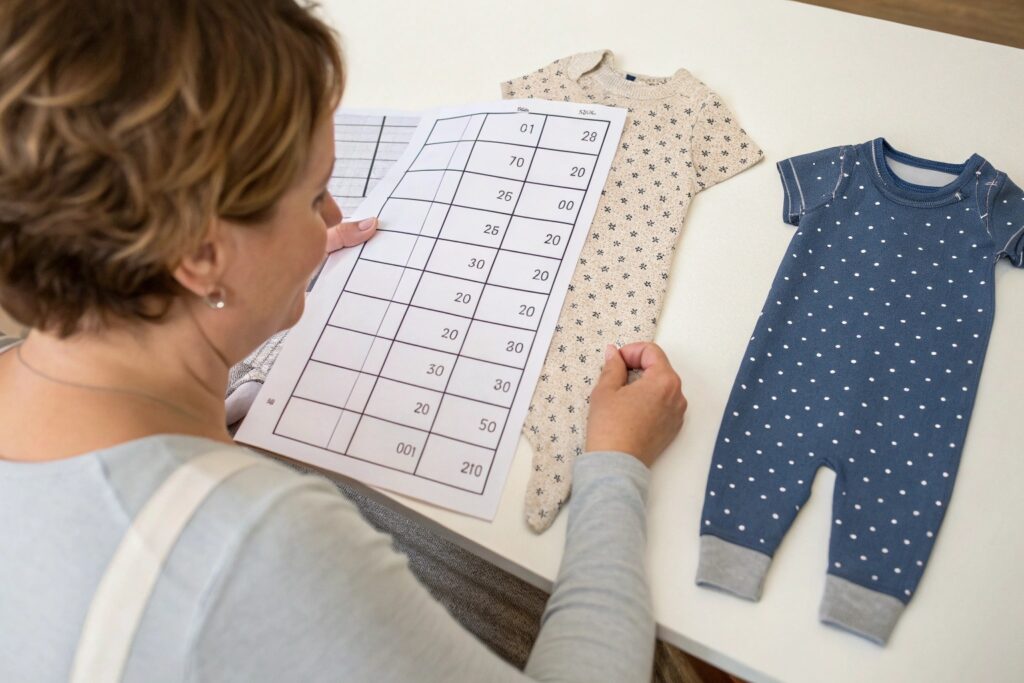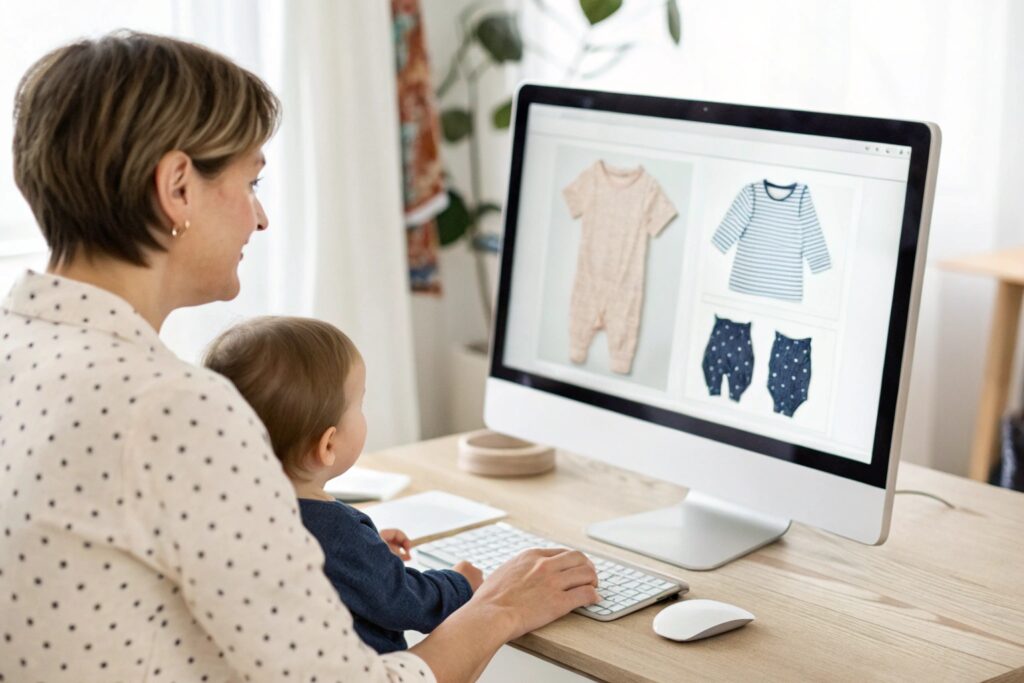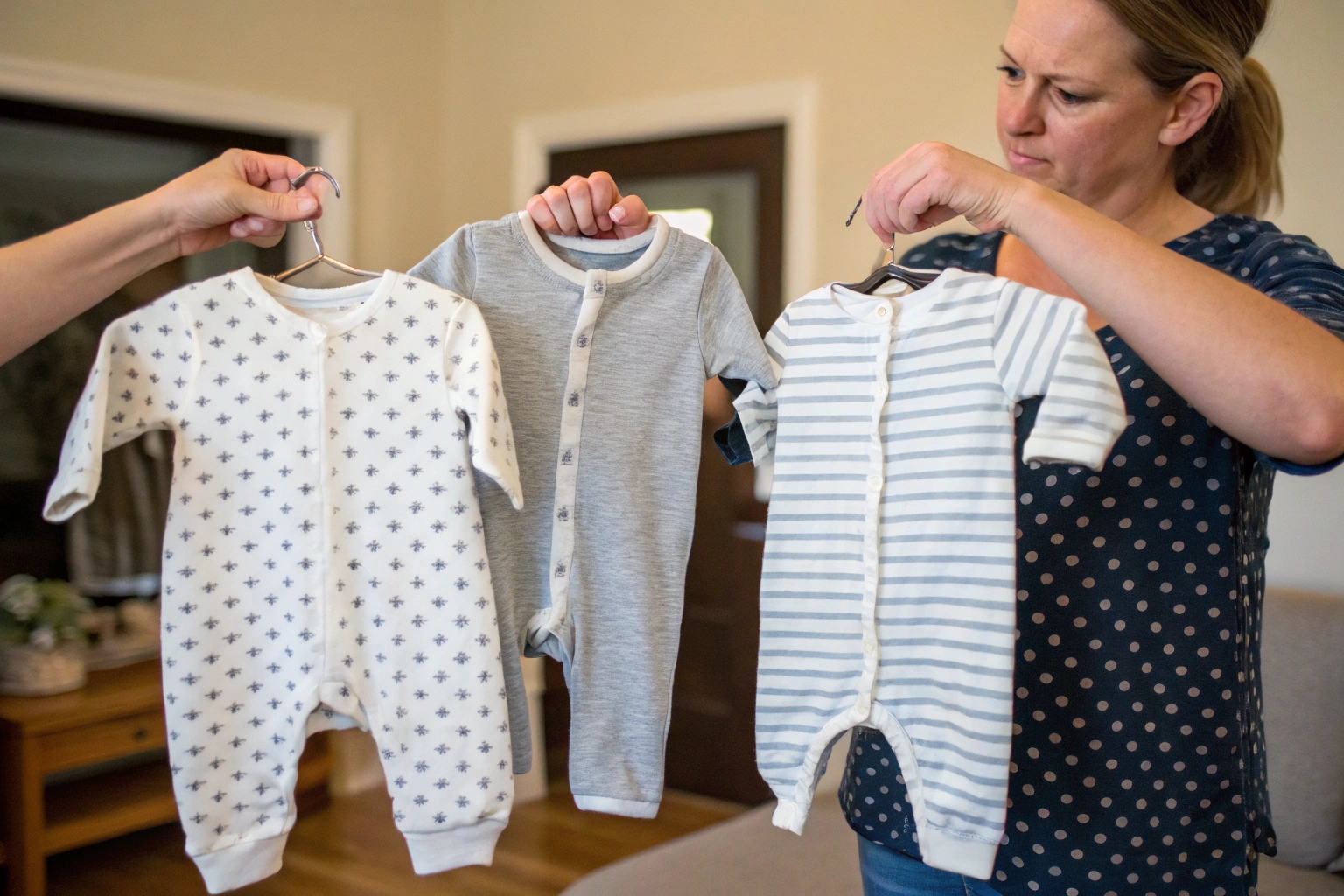You buy three “3–6M” outfits from three brands—and none of them fit the same. One’s too tight, one’s too long, and one is perfect. Why?
Baby clothes fit differently across brands because sizing systems, fabric stretch, manufacturing patterns, and country standards all vary.
Here’s how I help parents and buyers understand brand sizing—and what to watch for before clicking “buy now” or placing a bulk order.
How Baby Clothing Sizes Vary by Brand and Country?
The label might say 3–6 months, but there’s no global standard for what that actually means. A U.S. “3–6M” might fit completely differently than a European or Asian version.
Baby clothing sizes vary across brands and countries due to differences in growth data, regional averages, fit philosophy, and size labeling systems.

What size differences can I expect between American, European, and Asian babywear?
Here’s a general breakdown I’ve seen:
| Region | Common Labeling | Fit Tendency | Notes |
|---|---|---|---|
| USA | Age-based (0–3M) | Roomy in width | Designed for diaper space + fast growth |
| Europe | Height-based (cm) | Slimmer, longer fit | Precision-focused sizing |
| China/Asia | Height numbers (66/73) | Runs small | Often tighter around arms or thighs |
European brands often fit leaner babies well, while U.S. brands build in more ease. Chinese brands can run smaller overall—especially in imported cotton lines.
Why do global brands still use different sizing?
Each brand uses growth data based on local populations. A 3-month-old in Sweden might be taller than one in Southeast Asia. Brands also choose different fit philosophies: some want clothes to last longer (oversized), others prefer snug fit for style.
Why Fabric Type Affects the Fit of Baby Clothes?
Even with the same size tag, clothes made from different materials will feel and fit differently. Fabric stretch, weight, and finish all play a role.
The type of fabric changes how baby clothes fit—stretchy knits offer more flexibility, while woven fabrics fit tighter and show size issues faster.

What are the most common fabric types in babywear—and how do they affect fit?
Here’s a breakdown of popular babywear materials:
| Fabric Type | Fit Behavior | Notes |
|---|---|---|
| Cotton Rib Knit | Very stretchy | Great for fast growers |
| Cotton Jersey | Medium stretch | Most onesies and tees |
| Bamboo Blend | High stretch + drape | Lightweight but can look baggy |
| Woven Cotton | No stretch | Needs accurate sizing |
| Fleece/Terry | Bulky, low stretch | Fits tighter over diapers |
Stretch fabrics are more forgiving. I’ve seen a 0–3M ribbed romper fit a baby well into month five—while a woven one barely lasted a month.
How should parents or buyers adjust expectations based on fabric?
Check the fiber content. If the garment has 5% spandex or elastane, you can size down or expect it to last longer. If it’s woven with no give, size up or double-check the measurement chart. Always wash/stretch test a sample if buying wholesale.
What to Know About Brand-Specific Size Charts?
Not all “size charts” are created equal. Some just list ages. Others give full garment measurements. Some are hidden in PDF catalogs or only shared by request.
Brand size charts vary in detail, accuracy, and transparency—knowing how to read them helps avoid misfit orders and returns.

What should a good babywear size chart include?
A helpful chart shows:
- Body measurements: Baby height, weight, chest
- Garment measurements: Finished garment width, length, sleeve
- Fit intent: “Slim fit,” “relaxed,” “generous diaper room”
- Size guide range: in both cm and inches
Here’s a sample size chart I trust:
| Label | Baby Height (cm) | Baby Weight (kg) | Chest Width (cm) | Full Length (cm) |
|---|---|---|---|---|
| 66 | 60–66 | 5–7 | 23 | 45 |
| 73 | 67–73 | 7–9 | 25 | 49 |
| 80 | 74–80 | 9–11 | 27 | 52 |
What red flags should I watch for?
- No measurements listed—only “0–3M” or “S/M/L”
- Sizing that skips in odd intervals (66 → 80 → 100)
- Confusing charts with mix of body and garment sizing without clarification
When in doubt, I ask the brand: “Are these body sizes or garment measurements?” That one question avoids huge fit issues down the line.
Tips for Finding the Right Fit When Buying New Brands?
Trying a new babywear brand can feel risky—especially when sizes are unclear and return shipping takes weeks. But a few tricks can help.
To find the right fit with unfamiliar brands, compare charts side by side, read reviews closely, start with one piece, and always measure your baby.

What steps should parents take before buying babywear from a new brand?
Here’s what I always recommend:
- Measure your baby’s length, chest, and weight before ordering
- Compare size charts from the brand vs. what you already own
- Read buyer reviews—especially for comments on size accuracy
- Check return policy in case the fit is off
- Order one test item first before buying multiple sizes
If you’re buying wholesale or bulk:
- Request samples first in 2–3 sizes
- Have a test fit session with baby models or mannequins
- Clarify tolerances (e.g. “+/- 1.5 cm is acceptable”)
How can brands help buyers feel confident?
I encourage brands to add:
- “Runs small/large” notes
- Baby model stats (age, height, weight)
- Fit feedback percentages:
“82% of customers say this fits true to size.”
Even better? A short video showing how the item fits and stretches. That’s saved me—and many parents—a ton of sizing stress.
Conclusion
Baby clothes may be small, but fit issues are a big deal. Brand differences, fabric types, and chart confusion all play a role. With the right tools and habits, buyers and parents can make smarter size choices—and fewer returns.










